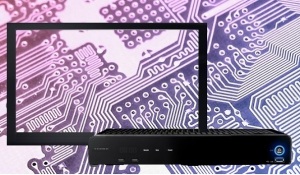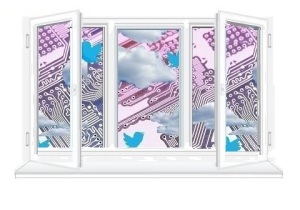What’s in a name?
I was thinking that we humans have a tendency to forget things. That is, we walk into a room and fully forget what we came in to get; we drive our car home and forget where we put the car keys. Well, we should all be able to remember this name.
“The Internet of Things”
Lazy and rather unimaginative, this name does what most names don’t actually do, it defines, describes and categorizes, then answers the question: “What is it?”
Once a theory and quickly realized, anything equipped with a sensor could be in constant communication with a computer processor. I can almost imagine the first MIT scientists throwing their hands up in technological glee, fully inspired by the sheer volume of their discovery!
Now a coffee pot in their office could “talk” to the refrigerator down the hall. And both could be programmed to “talk” to humans, as well as machines and more, these enchanted objects would be able to add cream and milk to your grocery list, as well as perform “yet to be thought of” applications. Big Data (with it’s equally unimaginative name) would gather and collect executable data, which could be analyzed in real time.
Mind boggling and still evolving into what just might be “the internet of nearly EVERYTHING”.
The Digital Age has jettisoned technology closer to a television cartoon with a similar name (The Jetsons). We don’t have flying cars, but who knows? Everything seems possible with sensors and a computer’s magical little black box, that processes code. That leads to technology getting smarter and smarter.
Change is coming, both progressive and disruptive. It can decimate confidence, shake up the bottom line and place a strain on long standing traditions. And we’re all prone to its “Goosies”, that skin tingling sensation induced by excitement or fear or disbelief.
Mature businesses, like older people will feel it acutely, maybe more so than start-up companies and younger, tech savvy people, who never used letterhead on bond paper and couldn’t tell the difference. But having different efficiency levels shouldn’t be a license to feast, one on the other.
It’s wiser to work together; bartering and collaborating like our ancestors did when they first discovered fire. And again, when they put fire to a best use practice, smelting iron and forging steel. Factoid, teamwork will always lessen a load.
We’ll have to use technology smartly, because finger swipes across a screen is not a measure of intelligence. We’ll also need to put on our thinking caps, which will act as a protective helmet in the event of a crash.
The mind is a powerful bubble making machine, full of ideas. So, what happens when a thought bubble pops?
I say we harness the gases for propulsion, fasten your seatbelt. It’s gonna be a helluva ride!










